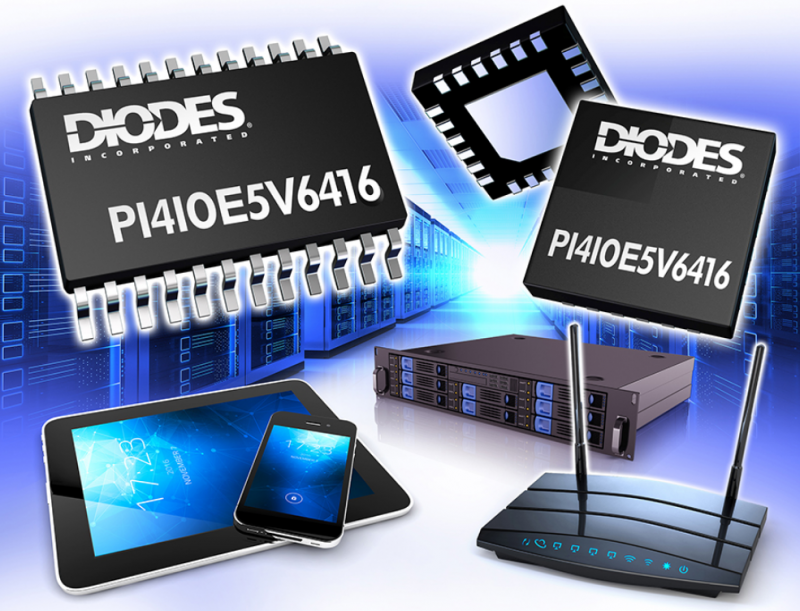Subscribe to EDOM TECH Newsletter
Diodes
2019/04/02
GPIO Port Expander From Diodes Incorporated Provides I2C Interface And Level Shifting For Any Peripheral

Diodes Incorporated (Nasdaq: DIOD), a leading global manufacturer and supplier of high-quality application specific standard products within the broad discrete, logic, analog and mixed-signal semiconductor markets, today announced the PI4IOE5V6416 16-bit I/O expander, which enables any digital device to be accessed and controlled over an I2C interface, across a range of input and output voltages from 1.8V to 5V. The PI4IOE5V6416 offers an ultra-low power solution to expanding the available GPIO on a microprocessor, microcontroller, ASSP, ASIC, or FPGA, using the ubiquitous I2C interface. With 16 individually configurable I/Os, developers can easily add an I2C interface to legacy peripherals such as keypads, push-button switches, or digital sensors. The I2C bus complies with both fast and standard modes.
Each of the 16 ports on the PI4IOE5V6416 is configurable as either an input or output by writing to the relevant register. All of the I/O pins feature a push/pull FET configuration: when configured as an input the FETs are turned off; when configured as an output the corresponding FET provides a low impedance path to either VDD(P) or VSS. Each port also features a programmable pull-up or pull-down resistor and programmable output current. A programmable latch is also provided for each pin when configured as an input.
As the PI4IOE5V6416 provides flexible, bidirectional voltage level shifting between the host and the outputs, it represents an ideal solution to interfacing legacy digital devices operating at up to 5.5V, with modern hosts operating at supply voltages as low as 1.65V.
In addition to providing bidirectional voltage level shifting and highly configurable I/O, the PI4IOE5V6416 also offers a maskable open-drain active-low interrupt output that can be configured to trigger on the change of state on any of the 16 GPIOs. This powerful feature has many potential uses where a specific condition can be used to initiate a system-level action, avoiding the need for the host to continuously poll the peripheral.
The PI4IOE5V6416 offers exceptionally low stand-by current consumption of just 1.5µA at 5V and 1.0µA at 3.3V. Active current consumption during continuous register read at an I2C bus speed of 400kHz and supply voltage of 1.65 to 2.3V is typically 20µA (45µA, max).
The PI4IOE5V6416 is available in a 24-pin TQFN (PI4IOE5V6416LE) package or 24-pin TSSOP (PI4IOE5V6416ZDE) package. Further information is available at www.diodes.com.






